Nine Innings: The Last Days of Defensive Shifts, Moving on From Manny Machado and More

WHY THE TIME IS NOW FOR MLB TO LIMIT THE SHIFT
By Tom Verducci
It didn’t take Royals manager Ned Yost long to answer when I asked him what could be done about the shift: “Ban it.” Like many people, Yost believes shifts depress offense and, because they reduce singles and prompt hitters to the hit the ball in the air, reduces the strategy of the game.
I have come to believe that at the very least baseball should adopt a rule in which all infielders must have at least one foot on the dirt portion of the infield. Years ago I believed rather than stifle innovation baseball should wait for hitters to adapt to the shifts by becoming better all-fields hitters. But here’s the problem: if you wait for that change—and there’s no sign of it coming, not when 12-year-old travel ball kids are training on “Launch Angle” tees—it will be too late for baseball.
Baseball needs to put a thumb on the scale of the balance between offense and defense. Every trend is pushing baseball farther away from a young generation of consumers who crave action and motion in shorter periods of time: the increase in strikeouts, the all-time lows of singles and balls in play, the decline of the stolen base, the record number of pitching changes, etc.
If your solution is to just sit here and wait for baseball to organically correct itself—faith in the old ebbs and flows of the game—you’re consigning baseball to more slippage in the national consciousness for years to come.
There is no question that shifts work as a strategy (to take away hits), but that they are counterproductive to how baseball gains and keeps its fans. They are particularly onerous to lefthanded hitters, because infielders on the right side can flex farther back and defend more space because of a shorter throw to first base than is required by infielders on the left side.
The single up the middle and the one-hop line drive to rightfield—base hits for more than a hundred years—are being removed from the game. In just the past four years, and based on this season’s rate, more than one thousand singles up the middle have gone missing (1,183 to be exact).
Two more points of evidence: first, take a look at how lefthanded hitters who face shifts suffer like nobody else:
MLB Batting Averages in 2018
| Overall | Facing Shift |
|---|---|---|
Righthanded Batters | .247 | .250 |
Lefthanded Batters | .247 | .227 |
The batting average for left or right, shift or no shift, is essentially the same with one major exception: lefthanders who see a shift get 20 points hacked off their batting average.
The second point of evidence: look how shifts used against lefthanders are not just increasing, but also—as the data teams apply become more precise—are more effective:
Lefthanded Batters Facing Shift
| Percent | Batting Average |
|---|---|---|
2015 | 7.2% | .242 |
2016 | 9.8% | ,242 |
2017 | 9.1% | .239 |
2018 | 12.3% | .227 |
There is no way Babe Ruth would have been a .342 career hitter today—for lots of reasons, but one of them is clubs would have taken hits away from him with carefully calculated shifts. And to the “keep-your-hands-off-the-sacred-game” crowd, their answer to Ruth losing hits to the shift would have been to tell Ruth to bunt or to develop a little inside-out swing and slap the ball the other way. What fun!
Imagine Tom Brady having to keep handing off the ball if the NFL didn’t ban contact of wide receivers five yards past the line of scrimmage, or LeBron James turning into a set shooter if the NBA didn’t establish illegal defenses.
Commissioner Rob Manfred has fostered an atmosphere of vigorous debate about how to improve and modernize baseball. Great. But such debates can go on forever. Waiting for consensus is folly. What is needed now is action. Whether it’s shifts or pitch clocks or governors on relief pitching, you always will get strong arguments both pro and con. At some point—and we’re right up against that point—Manfred is going to have to act, knowing that whatever he does there will be a chunk of his fans and especially those in the players association who are not going to like it.
BEST THING I SAW THIS WEEK: A STAR-STUDDED AMERICAN LEAGUE OUTFIELD IN D.C.
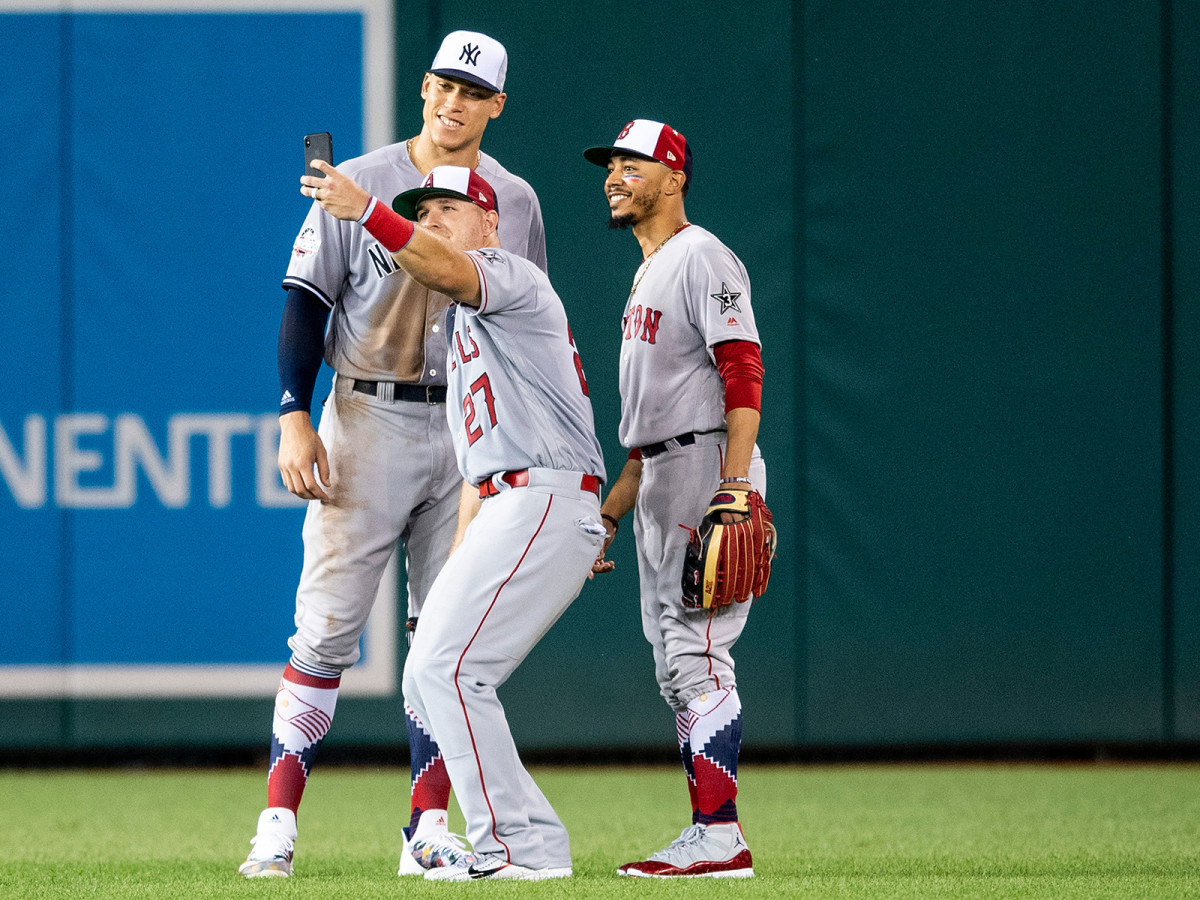
By Jack Dickey
I’m stealing Grant Brisbee’s bit, but it’s the AL’s starting outfield: Aaron Judge, Mike Trout, and Mookie Betts. When we grumble about the All-Star Game, one central gripe is that rosters too often stock the first-half phenomenon or the good-not-great player on a winning team over a more recognizable, valuable, and watchable star. For instance: Justin Smoak started at first for the AL last year; Jose Abreu didn’t even make the team. This year’s AL squad couldn’t find room for Andrelton Simmons, a generational talent on defense whose bat has finally caught halfway up to his glove skills, even though Michael Brantley did.
But Judge/Trout/Betts is as good as it gets, an unmistakable triumph. They are likely three of the best five hitters in baseball, and young, magnetic, and dynamic besides. Slugging and stealing (even Judge has swiped six bags this year), they signal what’s best about the game.
On Tuesday night, Trout and Judge clobbered homers off the two best pitchers in the NL, Max Scherzer and Jacob deGrom, and each notched a walk, too. (Betts went 0-for-3.) The homers were gravy, though. Simply seeing these three share an outfield was the kind of treat only the Midsummer Classic can provide
WHAT'S NEXT FOR THE LOSERS IN THE MACHADO SWEEPSTAKES?
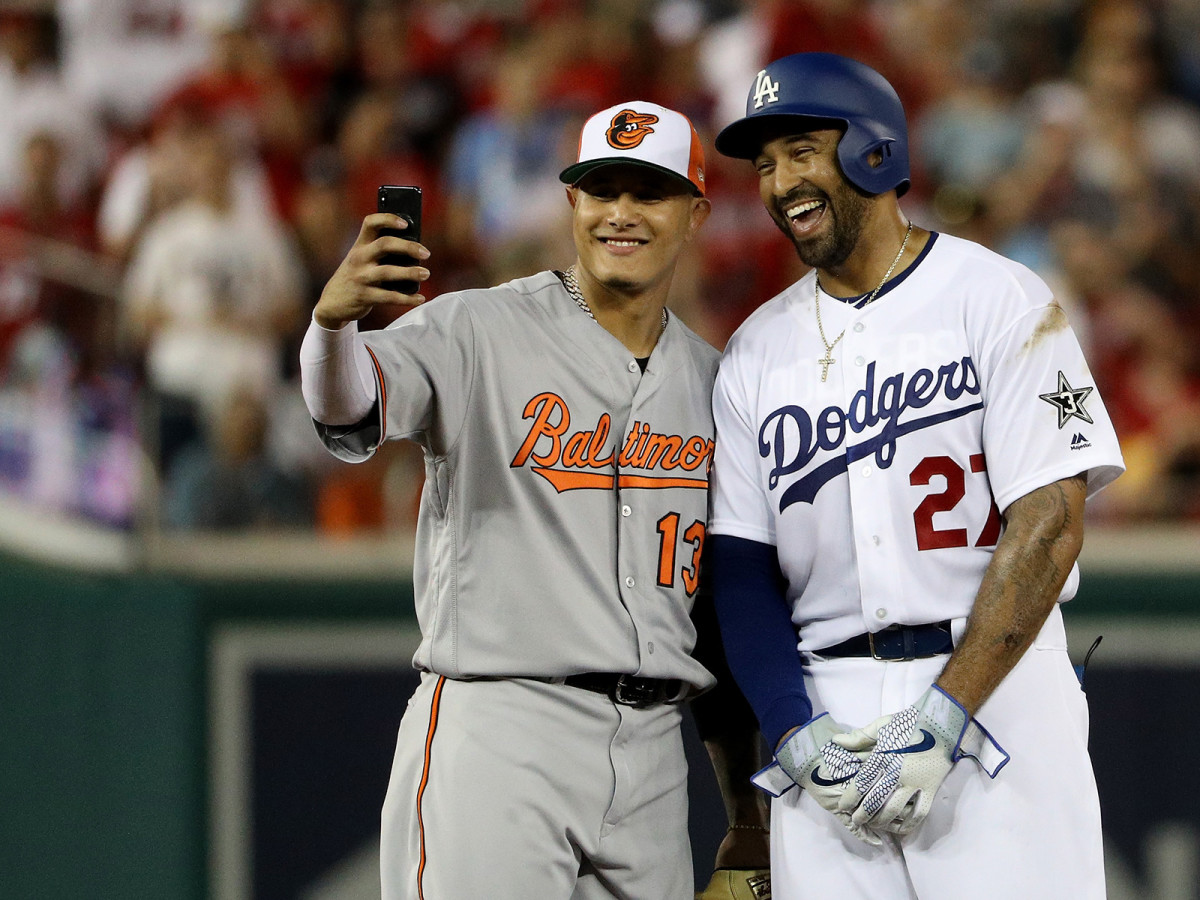
By Emma Baccellieri
The Manny Machado sweepstakes are over, and we’ve already addressed what this means for the winner—but what about the losers? Here’s what might be next for two of the teams who were unsuccessful in bidding for Machado’s services.
Philadelphia Phillies: The Phillies’ current lead over the Braves is as slim as can be—just half a game—and their biggest lead at any point this season has been only a game and a half. In other words, they don’t have any room to relax here. Their biggest deadline need remains at shortstop, where J.P. Crawford had been struggling until he was sidelined with a hand injury four weeks ago. (He’s due to return soon and has been replaced in the interim by rookie Scott Kingery, who hasn’t been any better.) Earlier this week, Jon Heyman threw out a couple of names that they might be interested in pursuing:
Assuming phillies don’t land manny now, they’ll still be targeting a SS, preferably one who’s a threat with bat. Eduardo Escobar could make sense. Most SS potentially on market r glove guys: Iglesias, alcides, Rojas, old friend galvis, hechavarria
— Jon Heyman (@JonHeyman) July 17, 2018
Escobar would indeed be a big grab, currently in the middle of the best season of his career at the plate. His 124 OPS+ is higher than that of anyone in Philadelphia’s everyday lineup. With Machado out of the game, there’s no clear miracle move that would grant them breathing room in this tight race—but this is about as close as they could get.
Milwaukee Brewers: The Brewers’ six-game losing streak heading into the break slipped them three games behind the Cubs, and with a tough schedule coming up—they don’t begin a series against a losing team until August 7—the next few weeks will be crucial for them. Their hole at shortstop isn’t quite as pressing as the Phillies’, but their situation there still isn’t great. Orlando Arcia failed to get his bat working earlier in the season and has since been replaced by Tyler Saladino, who’s been a better option, if not quite an inspiring one. The acquisition that might make the most sense for them? The Twins’ Brian Dozier, who would boost their infield as an upgrade at second base over Jonathan Villar and Brad Miller.
ROUNDTABLE: WHICH PLAYER WILL DEFINE THE SECOND HALF FOR HIS TEAM?
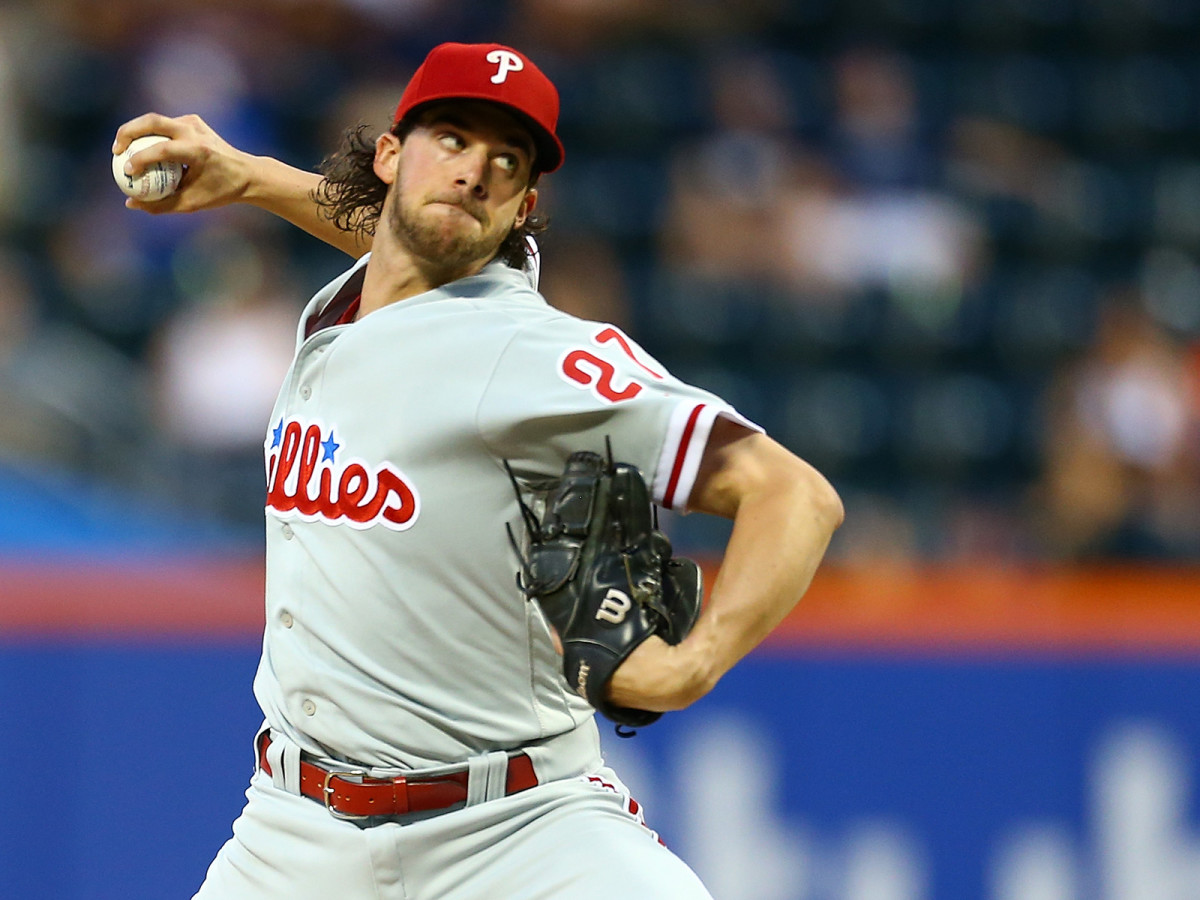
Emma Baccellieri: A.J. Pollock. The Diamondbacks have a tough race ahead—it should be increasingly tough for them to keep hanging with the Dodgers in the NL West, but a Wild Card spot is a real possibility. Pollock was sidelined for a good chunk of the first half with a fractured thumb, but he’s looked as sharp as ever since making his return two weeks ago. Right now, he’s on track for a career-best performance at the plate, and his defense in centerfield remains strong. If this team’s going to contend, Paul Goldschmidt can’t do the heavy lifting for the offense by himself. But if Pollock stays healthy and keeps playing like this, there’s good reason to expect success.
Gabriel Baumgaertner: The Dodgers have banked on Manny Machado, in the ultimate short-term gig, to win them a championship. Barring a stunning decline in his offense, he’s the player expected to impact baseball more than any other. Perhaps his brief tenure in Los Angeles will be seen as a bust, but it’s hard to think of any other player expected to impact the second half more than Machado.
Who Do You Hate to Face? MLB All-Stars (Mostly) Reveal Their Answers
Michael Beller: It has to be Clayton Kershaw. The Dodgers have found their way atop the NL West despite seemingly everything going wrong in the first half. They may be able to win the division without Kershaw shutting the door every fifth game, but they probably won’t be able to get through the NL without him. Even if we have to recalibrate what Kershaw’s top form is, there’s no questioning his stature as the Dodgers’ most important player. If he can consistently be 80% to 90% of what he has been in the past, the Dodgers will hold off their NL West foes and enter the postseason as a legitimate World Series threat. If he can’t be, they may simply limp to the Wild Card Game, or miss out on the postseason altogether.
Jack Dickey: It’s hard to know what to make of the first-place Phillies, 53-42 despite an offense ranking 11th in the NL in OPS, a pitching staff ranking No. 7 in runs allowed, and a defense that ranks 12th in turning balls in play into outs. These are not the typical credentials of a division winner, and barring a major talent infusion at the deadline, the Phillies will need their horses to continue galloping through September to hold off the Braves and Nats.
Foremost among those horses is all-star righty Aaron Nola, who has tossed more innings than any NL pitcher not named Max Scherzer and held hitters to a .199/.259/.278 line. Despite pitching in a bandbox and lacking overpowering stuff, he has allowed just two homers at home all year, and the Phillies have gone 14-6 in his 20 starts overall. Nola would be forgiven for regressing down the stretch—he has never before in his career been so good at limiting hard contact, nor has he ever thrown more than 168 innings—but the Phillies can’t afford that. There’s simply too little talent here for Philly to keep winning should his herculean efforts cease.
Manny Machado Bolsters the Fearsome Dodgers in Blockbuster Trade With Orioles
Connor Grossman: I'll go the unconventional route here and pick the Reds' Scooter Gennett. He's in the midst of a breakout season while the Reds are still picking up the pieces of a horrendous start to the season. Gennett is a big reason Cincinnati has dug its way out of a 21-games-under-.500 hole to a 43-53 record. He's currently on pace to win a batting title and hit nearly 30 homers. All from a guy who combined for 62 homers in his first four seasons. What a story it would be if the Reds finish with a winning record (or anything close to it, really).
Tom Verducci: Yu Darvish, Cubs. Chicago’s big free agent acquisition has been a bust. He’s been hurt and been bad when not hurt (1-3, 4.95 in eight starts). The Cubs are wearing out their bullpen—Chicago is on pace for a franchise-low 70 starts of six innings or more. Darvish still isn’t close to returning (Chicago may get Drew Smyly back off Tommy John surgery before Darvish is ready), but Darvish has the stuff and pedigree to not only impact the pennant race down the stretch but also the postseason.
RANK 'EM: CURRENT FIRST PLACE TEAMS LIKELY TO LOSE THEIR SPOT ATOP THE DIVISION
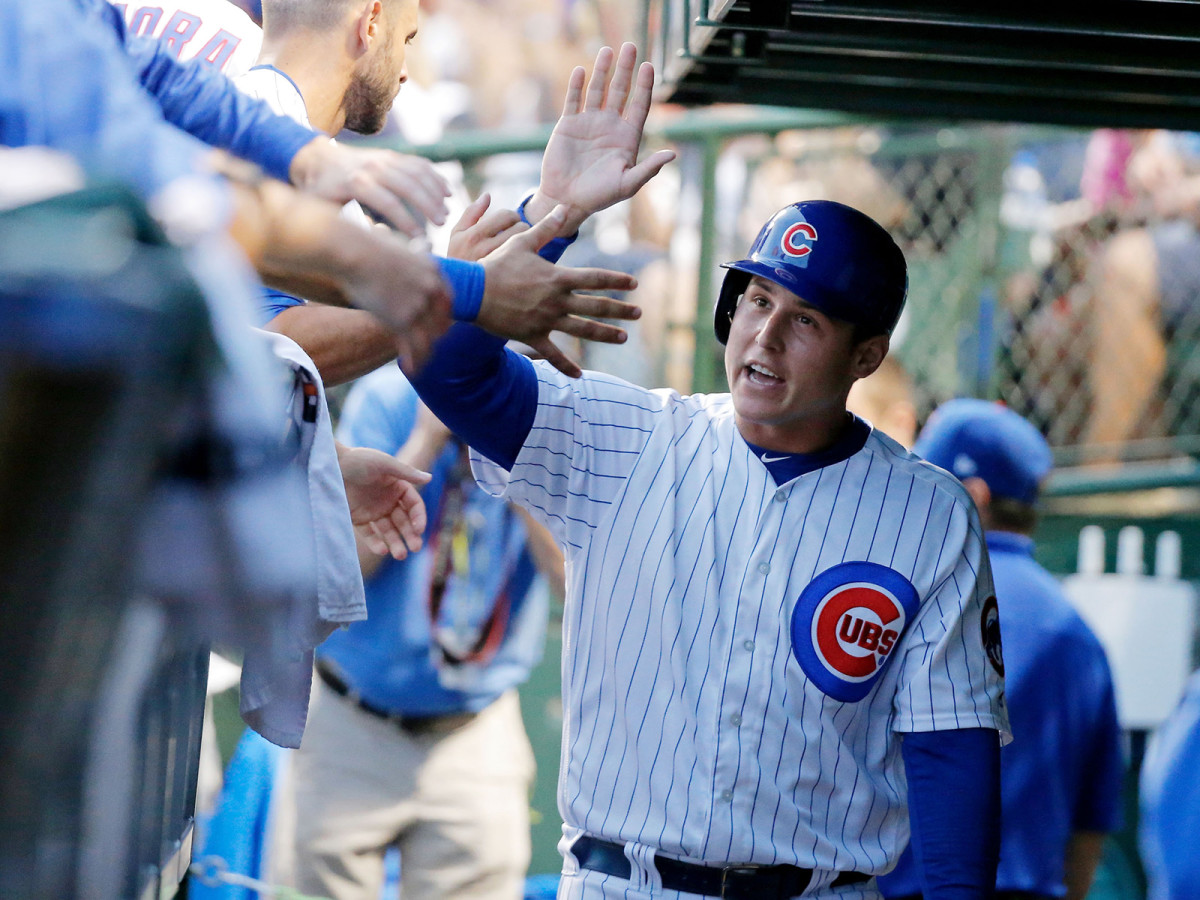
By Michael Beller
Every year since 2000, at least one team in first place at the All-Star break did not end the year in first place. Which current first-place team could be the one to continue the streak this year? Let’s rank them, in order from least likely to fall out of first, to most likely.
6. Cleveland Indians
Lead: 7 1/2 games over the Twins
The Indians have the worst record of any division leader in baseball, but they’re also the safest bet to remain atop their division. The AL Central isn’t only the worst division in the majors this year. It could go down as one of the worst in MLB history. Even including the Indians’ 52-43 record, the AL Central is 197-280 on the year, good for a .413 winning percentage. The bottom three teams in the division are all at least 16 games under .500, and the Royals and White Sox are both on pace to lose at least 106 games. The Indians aren’t getting caught.
Lead: 5.0 games over the Mariners
The Mariners were one of the brightest surprises of the first half, but the bet here is that the Astros will win the AL West by more than five games. That’s saying something, given the competition from the Mariners and A’s. But the Astros are an absolute juggernaut, with baseball’s best rotation and one of just five offenses scoring five-plus runs per game (the Red Sox, Yankees, Cubs and Indians are the other four). The Astros are a force, and despite the looming presence of Seattle and Oakland, they are extremely likely to repeat as division champs.
Did MLB Properly Punish Josh Hader for His Offensive Tweets as a Teenager?
4. Chicago Cubs
Lead: 3.0 games over the Brewers
The Cubs played a lot of uneven baseball during the first half. Yu Darvish, Kris Bryant and Anthony Rizzo all spent time on the DL. Darvish, Jose Quintana and Tyler Chatwood combined for a 4.55 ERA. All that, and the Cubs still have the best record in the NL. They lead the NL in run differential, runs per game and OBP, and they’ve done it all with their two best hitters, Bryant and Rizzo, falling short of expectations.
Lead: 4 1/2 games over the Yankees
Make no mistake, the Red Sox have to hold off the best challenge to remain on top of their division. However, the two division leaders below have the slimmest of leads, and both could be out of first by time action wraps up on Friday night. The Red Sox aren’t considered safer than those teams simply by default, however. Behind Mookie Betts and J.D. Martinez, the Red Sox lead the majors in runs per game. Chris Sale is putting together another Cy Young-caliber season, and Rick Porcello and Eduardo Rodriguez have picked up the slack for a struggling David Price. The Red Sox could use some rotation help, and they’ve still got a couple of weeks to find it, but they don’t need it to win the AL East. The Yankees should make this baseball’s most exciting division race, given that neither wants to be relegated to the Wild Card game.
Manny Machado to the Dodgers and the Biggest July Trades of the Last 20 Years
Lead: 1/2 game over the Diamondbacks
It’s a minor miracle that the Dodgers are atop the NL West. At the end of April they were 12-16. They were 26-30 at the end of May, the same record as the Tigers and just one game better than the Blue Jays. The team’s leader in pitcher WAR is Ross Stripling. Max Muncy leads the Dodgers in hitter WAR. Corey Seager is out for the season and Clayton Kershaw has made two trips to the DL. And yet, here they are, 53-43, a half-game better than the Diamondbacks and set to add Manny Machado. L.A. is more likely to fall out of first than the Red Sox, but it wouldn’t be a surprise to see it with a greater margin in the NL West than the Red Sox enjoy in the AL East at season's end.
1. Philadelphia Phillies
Lead: 0.5 games over the Braves
The gap between the Phillies and the other first-place teams cannot be overstated. They may be a half-game better than the Dodgers, but they haven’t necessarily played like it. Their Pythagorean record, which measures expected win-loss based on run differential, is just 49-46. That’s much worse than the second-place Braves (54-40) and trails the Angels (51-46) and Rays (50-46), both non-contenders.
The Phillies are also the only team on the list that may have to worry about the third-place team in the division as much as the second-place team. That’s no disrespect to the surging Braves, but the Nationals are MLB’s sleeping giant. They sputtered to a 48-48 first half, but no team with Bryce Harper, Max Scherzer, Stephen Strasburg, Anthony Rendon, Trea Turner and Juan Soto can be counted out right now. At 51-45, the Nationals also have a better Pythagorean record than the Phillies. Philadelphia might be hanging onto pole position in the NL East right now, but don’t bet on them to be there in October.
REVISITING SI'S PRESEASON PREDICTIONS
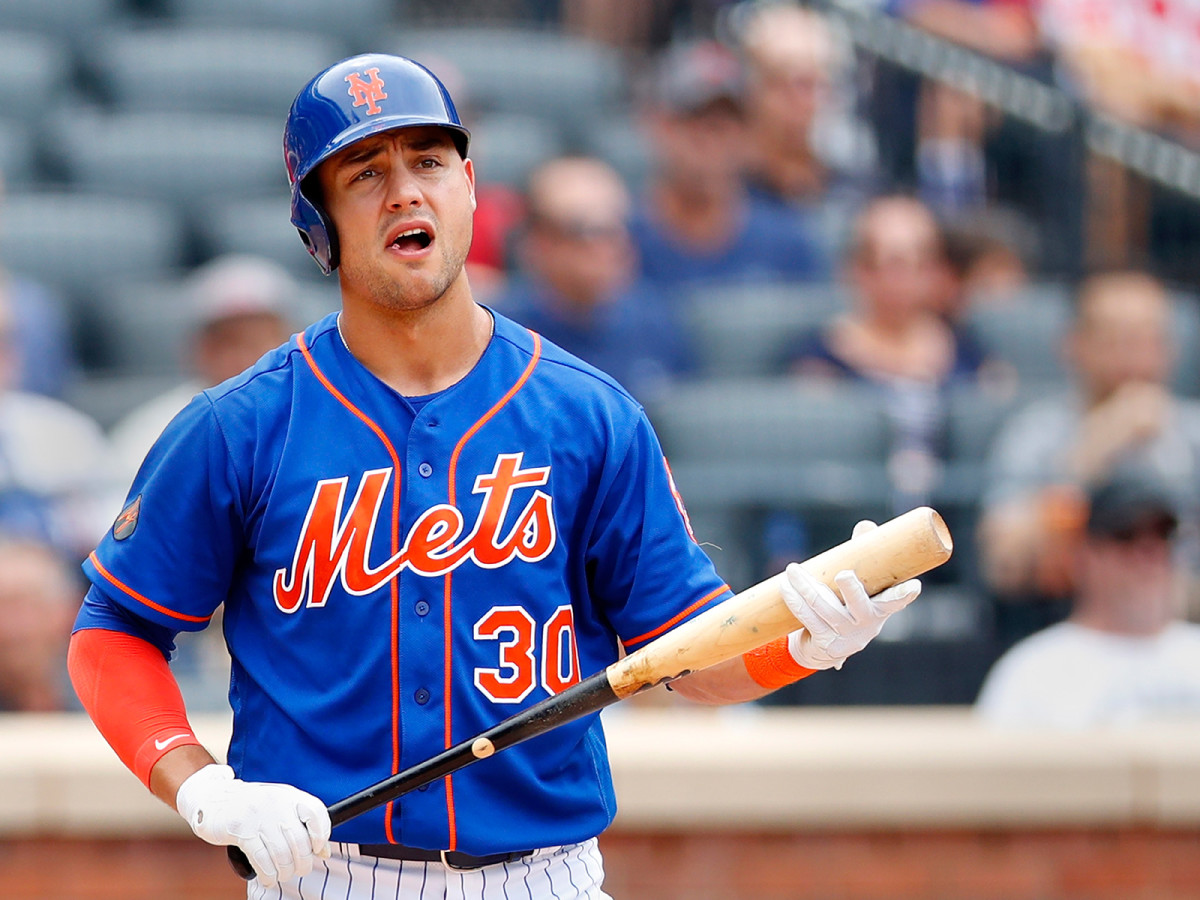
By Gabriel Baumgaertner
Like we're obligated to do as a sports newsgathering organization, we made preseason predictions before this baseball season got underway. Many of them will be lucky guesses, and even more of them will just be wrong.
Let's revisit our work from March.
• None of us are in any position to reach perfection as several of us predicted the Mets and Twins as playoff teams, others predicted Yu Darvish earning a significant award while some insisted a NL Central team which fired its manager would appear in the NLCS. The beauty or horror of preseason predictions is that so-called experts become foolish as injuries, firings and unpredictability hijack our visions of the upcoming season.
• The biggest disappointment? I’d argue the Twins while other would say the Mets. The Twins’ Byron Buxton, one of the supposed breakout stars of 2018, maintains a slash line of .156./183/.200 over 28 games while the star power hitter, Miguel Sanó, currently resides in Class-A Fort Myers trying to rehab his swing. The Mets, meanwhile, have the best starting pitcher in baseball in Jacob deGrom, but have granted him five total wins despite his dominant first half.
Shohei Ohtani Cleared to Begin Throwing Progression
• The Cardinals, my pick for the NLCS, have fired their manager and are struggling to find capable hitters despite their usual ability to find star starting pitchers (Miles Mikolas, Jack Flaherty). Predictions are faulty ideas bound to fail, but the decline of Middle America’s promising franchises have further entrenched Major League Baseball of haves and have-nots that may resemble the future of a game struggling for increased exposure.
• In that game of haves and have-nots, the first half is disappointing to those who yearn for smaller-market teams to upset the usual order of Major League Baseball. Yet, the success of Los Angeles, New York (AL) and Boston may ultimately benefit a game needing a better and sexier look, even if our experts our wrong.
• And we can all take this time to applaud Michael Beller, bold enough to predict the A’s as a Wild Card team, while chuckling at Jack Dickey, who selected the hapless Rangers as one of his Wild Card teams. We know something about baseball, but this is a passage to remind you that we don’t really know that much after all.
WHAT'S ON TAP: STEPHEN STRASBURG RETURNS AS NATS HOPE TO CHANGE COURSE
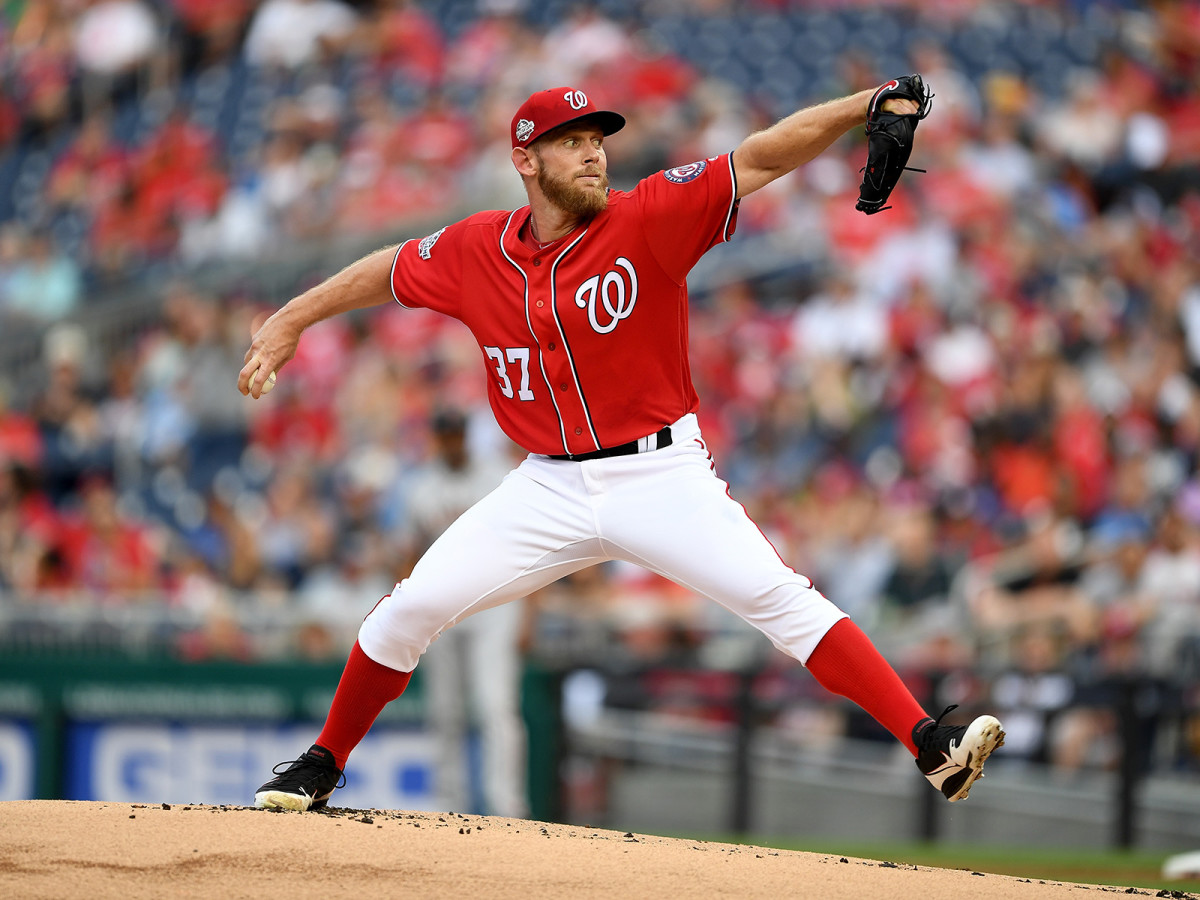
By Michael Beller
Hitter to Watch: Alex Bregman, Astros
Bregman was one of the hottest hitters in baseball to end the first half, and he capped it off by winning All-Star Game MVP. He’s one of three players in baseball with a strikeout rate lower than 12.5%, walk rate higher than 12.5% and slugging percentage of .500 or greater. The other two are Jose Ramirez and Mookie Betts. If Bregman proves to be Houston’s best hitter already at this stage of his career, the Astros' chances of winning back-to-back titles are that much greater.
Pitcher to Watch: Stephen Strasburg, Nationals
Despite suffering through the league’s most disappointing first half, the Nationals are 5 1/2 games out of first in the NL East. Strasburg’s injury had more than a little to do with the team’s struggles. After spending more than a month on the DL with shoulder inflammation, he’ll take the ball in the team’s first game of the second half, facing the Braves on Friday night. The Nationals will not stick in the NL East race, let alone climb in front of the Braves and Phillies, without a healthy Strasburg. It may just be one start, but it feels like a whole lot more than that for the Nationals’ righty.
Series to Watch: Dodgers at Brewers, Friday through Sunday
There are two other big series in the NL, with the Braves hosting the Nationals and Rockies visiting the Diamondbacks, but this one takes precedence. The Dodgers are leading the NL West, but it’s the Brewers who enter with a better record at 55-43. The Dodgers, however, made the big coup during the All-Star break, fending off the Brewers and Phillies to acquire Manny Machado from the Orioles. This is a big series to start the second half for both teams, and kicks off a particularly brutal stretch for the Dodgers. After this series, they visit the Phillies and Braves, return home to host the Brewers and Astros, and then go back out on the road to play the A’s and Rockies.
TWEETS OF THE WEEK
Never-before-seen color movie footage from Ted Williams' final game and final home run in 1960. Utterly mesmerizing. https://t.co/roqlbJRi3n
— Josh Kantor (@jtkantor) July 19, 2018
This was a really fun question!
— Jayson Stark (@jaysonst) July 18, 2018
Last starter before Happ to get a save in an ASG: Sid Fernandez in 1987!
But since the dawn of the modern save rule, the answer to your question is....
Never! This was the only ASG in the last 50 years with a closer as WP & starter with a save https://t.co/Ic0UHxRJ1t
Game Tying HR in 9th Inning - All-Star Game
— Mark Simon (@MarkASimonSays) July 18, 2018
Ralph Kiner, 1950
Fred McGriff 1994
Scooter Gennett 2018
Zack Greinke, asked about his expectations for the home run derby: "I expect the home run derby will be boring and I'll leave early."
— Ted Berg (@OGTedBerg) July 16, 2018
FROM THE VAULT: HAPPY BIRTHDAY, PINE TAR GAME
By Connor Grossman
The clip above will live in baseball history forever: Royals third baseman George Brett charging like a bull at umpire Tim McClelland, who called the future Hall of Famer out after hitting a go-ahead home run with two outs in the ninth. Why was he out? Brett's bat had pine tar too high on his bat. Most fans know at least that much of the story.
What you might not know is that a New York State Supreme Court judge had to decide if the umpire's decision should be overruled. And once it was and the game resumed 25 days later, the Yankees tried to appeal that Brett missed first base. Relive the hilarity and drama that ensued in this game, officially 35 years old next Tuesday, through Steve Wulf's story.
Find the full piece here and enjoy the excerpt below.
Last week two attorneys representing fans went to court to try and have their tickets honored at the Pine Tar Game—the Yankees had said that only season-ticket holders could get in free. The Yankees and their attorney, Roy Cohn, joined forces with the fans and sought to postpone Thursday's game. In the meantime, the Yankee players kept putting off a vote on whether to play the game or go to Gossage's house for a combination forfeit and pool party.
This left the Royals quite literally up in the air. Their TWA Charter No. 8732 left Kansas City Thursday at 11:00 a.m. Central Time, bound for either New York or Baltimore, where they were to play the next day. That morning Justice Orest V. Maresca of the State Supreme Court in the Bronx granted an injunction preventing the game. One of the Yankees' arguments was that their security force, which would be at one-quarter strength, would be ill-equipped to handle the throngs. The American League, which had to borrow National League lawyers, went to the Appellate Division of the Supreme Court, and at 3:35 Justice Joseph P. Sullivan said, "As far as the stay, I guess I can state it best in two words: 'Play ball.'"
